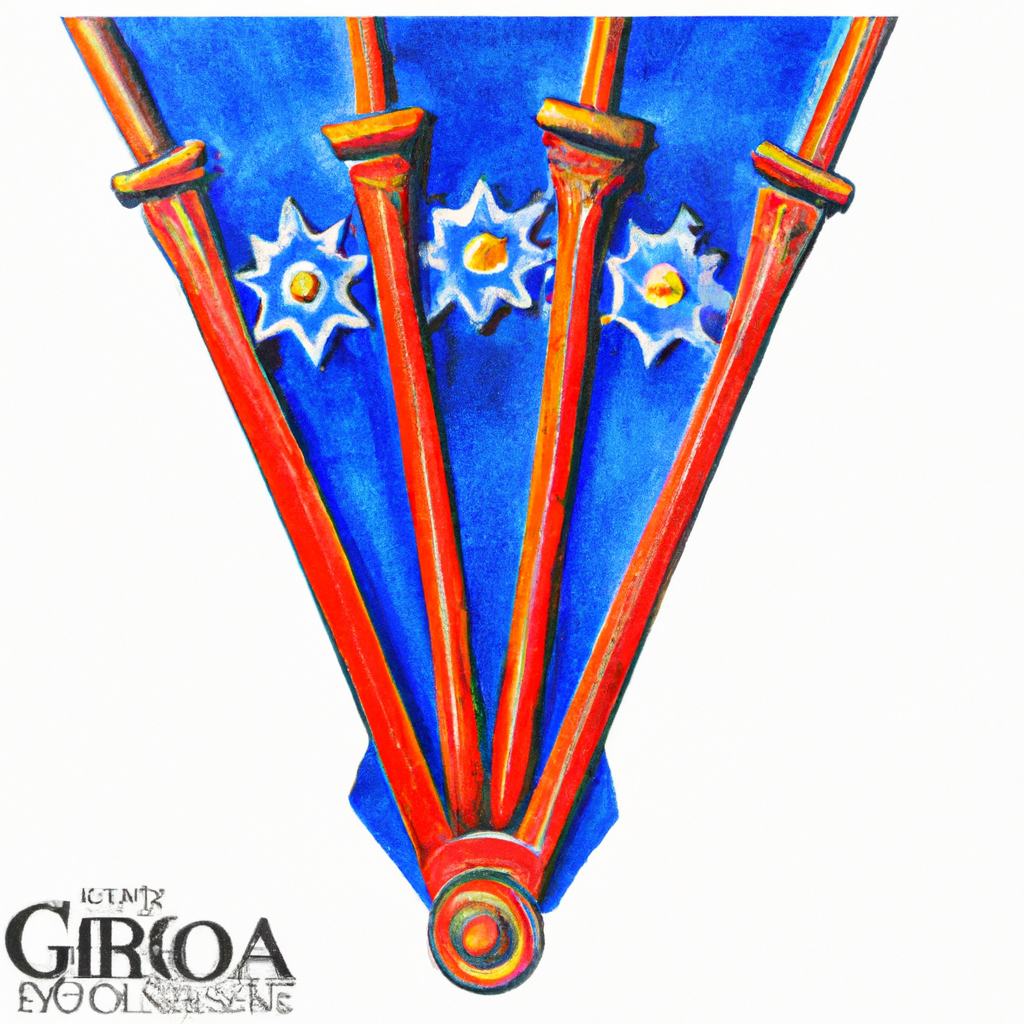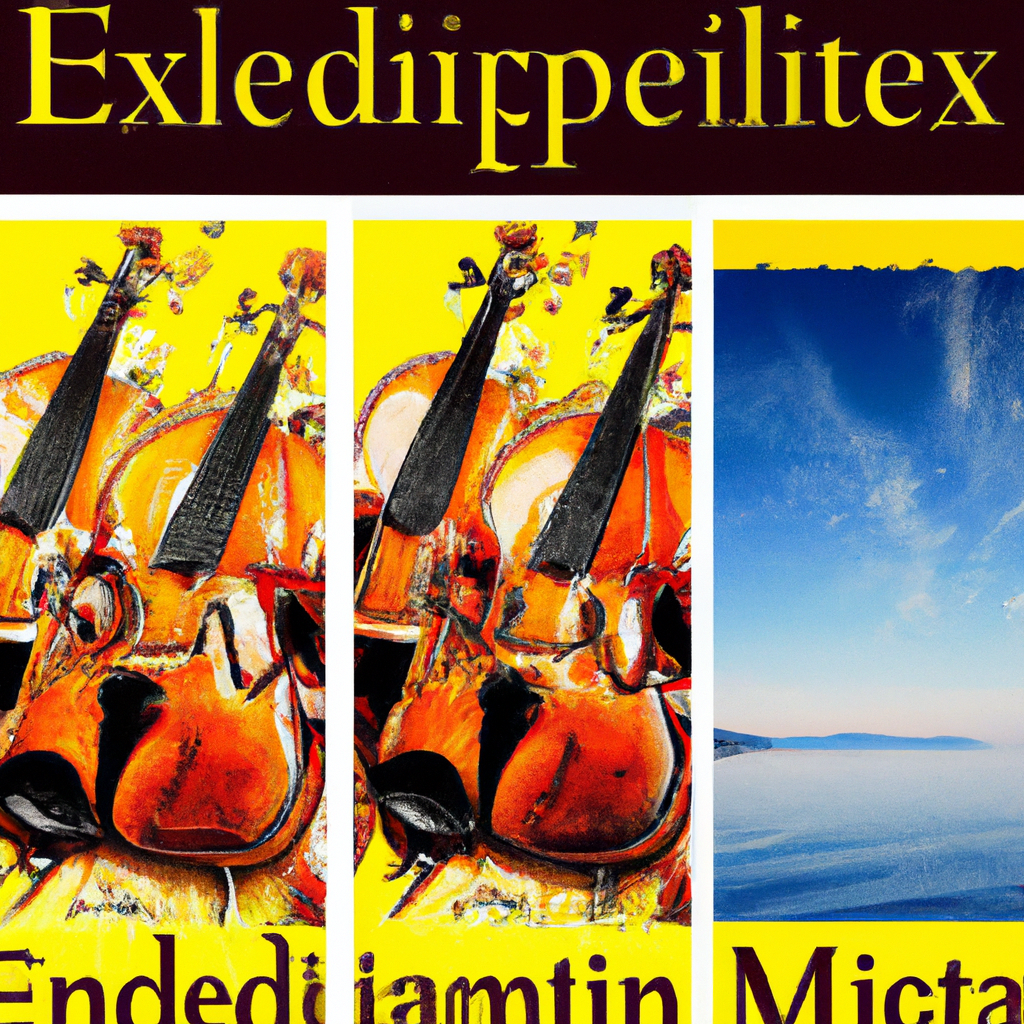Imagine yourself strolling along the picturesque streets of the Aegean Islands, with the gentle sea breeze caressing your skin. In the midst of this idyllic scene, you are drawn towards a lively gathering where music and dance permeate the air. The vibrant tradition of Aegean Islands folk music and dance is deeply rooted in the rich cultural heritage of these Greek islands. From the melancholic melodies of the lyra to the energetic steps of the syrtos, this enchanting art form captivates locals and visitors alike, creating a tapestry of sound and movement that celebrates the enduring spirit of these captivating islands.

1. Introduction
The vibrant tradition of Aegean Islands folk music and dance is deeply rooted in the rich history and cultural heritage of the Greek islands. This unique art form has been passed down through generations, reflecting the diverse influences of various civilizations that have left their mark on these islands. From the rhythmic melodies to the energetic dance styles, Aegean Islands music and dance continue to captivate audiences worldwide.
2. Geography and Cultural Background
2.1 Islands of the Aegean
The Aegean Islands, located in the southeastern part of Greece, are composed of numerous picturesque islands. Each island has its own distinct character and cultural traditions, contributing to the diversity of Aegean Islands folk music and dance. From the popular tourist destinations of Santorini and Mykonos to the lesser-known gems like Samos and Karpathos, these islands offer a glimpse into the rich tapestry of Greek culture.
2.2 Influence of Geography on Music and Dance
The geography of the Aegean Islands has played a significant role in shaping the music and dance styles of the region. With their stunning landscapes and picturesque coastlines, the islands have inspired a lively and energetic musical tradition. The sound of crashing waves, the gentle breeze, and the vibrant colors of the Mediterranean have found their way into the rhythms and melodies of Aegean Islands music.
2.3 Cultural Diversity and Byzantine Influence
The cultural diversity of the Aegean Islands is a result of the numerous civilizations that have inhabited the region throughout history. The Byzantine Empire, in particular, exerted a profound influence on the music and dance of the islands. Byzantine hymns and chants blended with local folk traditions, giving rise to a unique musical style that is distinctly Aegean.
3. Traditional Instruments
3.1 Bouzouki
The bouzouki is perhaps the most iconic instrument of Aegean Islands folk music. It is a stringed instrument similar to a mandolin, but with a longer neck and a distinct sound. The bouzouki produces powerful and resonant tones, adding depth and richness to the music. It is often played with a technique called “bouzouki tremolo,” which involves rapidly strumming the strings to create a vibrant and lively sound.
3.2 Violin
The violin is another important instrument in Aegean Islands folk music. Its soaring melodies and expressive capabilities make it an integral part of the musical ensemble. The violin adds a touch of elegance and grace to the music, often taking the lead in intricate and emotive solos. Its versatility allows it to adapt to a wide range of musical styles, from joyful dances to soulful ballads.
3.3 Baglama
The baglama, also known as the Greek bouzouki, is a smaller version of the bouzouki. It has a shorter neck and fewer strings, giving it a unique sound and character. The baglama is typically played with a pick or fingers, creating a rhythmic accompaniment to the melodies. Its lively and percussive nature adds a distinct flavor to Aegean Islands music.
3.4 Lyre
The lyre is an ancient instrument that has been played in the Aegean Islands for centuries. It has a small, rounded body with strings stretched across a wooden frame. The lyre produces enchanting and ethereal melodies, evoking a sense of nostalgia and ancient mystique. Its haunting sound is often heard in traditional ballads and laments, adding a touch of melancholy to the music.
3.5 Percussion Instruments
Percussion instruments such as the toumberleki (a small drum) and the defi (a large, frame drum) play a crucial role in Aegean Islands folk music. They provide the rhythmic foundation, driving the music forward and setting the pace for the accompanying instruments and dancers. The pulsating beats and infectious rhythms of these percussion instruments create an irresistible urge to dance and celebrate.
4. Musical Characteristics
4.1 Rhythms and Melodies
The rhythms and melodies of Aegean Islands folk music are characterized by their vibrant and dynamic nature. The music is often in a 6/8 or 7/8 time signature, creating a lively and syncopated rhythm that is perfect for dancing. The melodies are uplifting and joyful, often incorporating elements of improvisation and ornamentation to add complexity and depth.
4.2 Modal System
The modal system, known as the “makam” in Greek music, is an important aspect of Aegean Islands folk music. It consists of a series of scales and melodic patterns that give the music its distinct flavor. Each island has its own unique set of modes, reflecting the cultural and historical influences of the region. The modal system adds depth and richness to the music, allowing for endless variations and improvisations.
4.3 Improvisation and Ornamentation
Improvisation and ornamentation are fundamental elements of Aegean Islands folk music. Musicians often add their own personal touches and flourishes to the melodies, creating a sense of spontaneity and creativity. Ornamentation techniques such as trills, slides, and grace notes are used to decorate the melodies, adding expressiveness and virtuosity to the music.
4.4 Lyrical Themes
The lyrics of Aegean Islands folk songs often reflect the daily lives, dreams, and struggles of the people. Themes of love, loss, nature, and the sea are common in the lyrical tradition. The poetic nature of the lyrics, combined with the expressive melodies, creates a powerful connection between the music and the emotions of the listeners.

5. Dance Styles
5.1 Syrtos
The syrtos is perhaps the most popular and widely recognized dance style of the Aegean Islands. It is a group dance characterized by its lively and intricate footwork, synchronized movements, and joyful atmosphere. The dancers form a circle, holding hands and moving in a circular pattern, often accompanied by rhythmic clapping and shouts of joy. The syrtos is a celebration of community and unity, encapsulating the spirit of the Aegean Islands.
5.2 Kalamatianos
The kalamatianos is a fast-paced dance style that originated in the island of Kalamata. It is characterized by its energetic and intricate footwork, quick turns, and playful interactions between partners. The dancers often hold a handkerchief or scarf, twirling it in the air as they move. The kalamatianos is a spirited dance that brings people together and ignites a sense of joy and celebration.
5.3 Ikariotikos
The ikariotikos is a lively dance style that hails from the island of Ikaria. It is characterized by its fast-paced rhythm, rhythmic stomping, and playful movements. The dancers form a semicircle, linking arms and moving in sync with the music. The ikariotikos is a powerful and energetic dance that reflects the strength and resilience of the Ikarian people.
5.4 Hasapiko
The hasapiko, also known as the “butcher’s dance,” is a slow and dignified dance style that originated in Constantinople (now Istanbul). It is characterized by its deliberate and graceful movements, emphasizing control and precision. The dancers often hold hands or link arms, moving in a synchronized pattern. The hasapiko is a mesmerizing and elegant dance that showcases the beauty and grace of the Aegean Islands.
5.5 Pentozali
The pentozali is a spirited and energetic dance style that is native to the island of Crete. It is characterized by its fast and intricate footwork, dynamic movements, and vibrant atmosphere. The dancers often form a line or a circle, moving in sync with the music and the rhythm. The pentozali is a powerful and exhilarating dance that demands stamina and agility, captivating the audience with its infectious energy.
6. Role in Social Gatherings and Festivals
Aegean Islands folk music and dance have always played a central role in social gatherings and festivals. Whether it’s a traditional wedding, a religious celebration, or a village feast, music and dance bring people together, fostering a sense of community and unity. The rhythmic beats and infectious melodies create an atmosphere of joy and celebration, encouraging everyone to join in the festivities. These traditions are passed down from generation to generation, ensuring that the vibrant spirit of the Aegean Islands lives on.
7. Preservation and Revival Efforts
7.1 Local Music and Dance Groups
Local music and dance groups in the Aegean Islands play a vital role in preserving and promoting the traditional art forms. These groups consist of passionate musicians, dancers, and enthusiasts who dedicate their time and efforts to ensure the continuation of the cultural heritage. They organize regular rehearsals, performances, and workshops, passing on their knowledge and skills to younger generations.
7.2 Cultural Festivals and Workshops
Cultural festivals and workshops provide a platform for artists and performers to showcase their talents and share their love for Aegean Islands folk music and dance. These events attract artists from different islands, fostering collaboration and exchange of ideas. Visitors from around the world have the opportunity to immerse themselves in the rich musical traditions, learning from skilled musicians and dancers.
7.3 Recognition and Support from Government
The Greek government recognizes the importance of preserving and supporting the folk music and dance of the Aegean Islands. Institutions and organizations are established to promote and protect the cultural heritage, providing funding and resources for research, documentation, and education. Government support ensures that Aegean Islands folk music and dance continue to thrive and evolve in the modern world.
8. Contemporary Fusion and Influences
8.1 Popular and Contemporary Adaptations
Aegean Islands folk music and dance have not remained stagnant in the face of modern influences. Artists and musicians continually explore new creative avenues, adapting traditional melodies and movements to contemporary styles. Popular adaptations of traditional songs have gained recognition both within Greece and internationally, bringing Aegean Islands music and dance to new audiences.
8.2 Fusion with Other Genres
Aegean Islands folk music has also found common ground with other music genres, resulting in unique fusions and collaborations. Jazz, rock, and world music have all embraced the rhythmic and melodic qualities of Aegean Islands music, creating exciting and innovative compositions. These collaborations bridge the gap between different cultures, fostering a sense of shared musical heritage.
8.3 International Collaboration and Recognition
Aegean Islands folk music and dance have gained recognition on the global stage, thanks to international collaborations and performances. Musicians and dancers from the Aegean Islands have collaborated with artists from around the world, showcasing the richness and beauty of Greek culture. International festivals and events provide a platform for these talented artists to share their artistry with audiences worldwide.
9. Famous Musicians and Dancers
9.1 Notable Musicians
The Aegean Islands have produced many talented musicians who have gained recognition for their contributions to folk music. Notable musicians include Manolis Hiotis, Vassilis Tsitsanis, and Yiannis Parios. These artists have dedicated their lives to preserving and promoting the unique musical traditions of the Aegean Islands, leaving a lasting impact on the cultural heritage.
9.2 Renowned Dance Groups
Renowned dance groups such as Lykeio Ellinidon of Athens and Dora Stratou Dance Theatre have showcased the beauty and grace of Aegean Islands folk dance to audiences worldwide. These professional dance groups have preserved and promoted traditional dance styles, captivating audiences with their skill, precision, and passion for the art form.
10. Conclusion
The vibrant tradition of Aegean Islands folk music and dance is a testament to the rich cultural heritage of the Greek islands. From the rhythmic melodies and lively dance styles to the timeless stories and powerful emotions, this art form continues to captivate and inspire audiences around the world. Thanks to the efforts of dedicated musicians, dancers, and enthusiasts, the vibrant spirit of the Aegean Islands lives on, ensuring that this unique cultural tradition will be cherished for generations to come.
